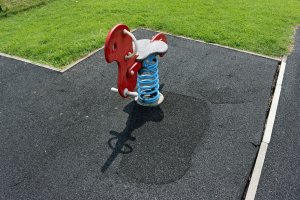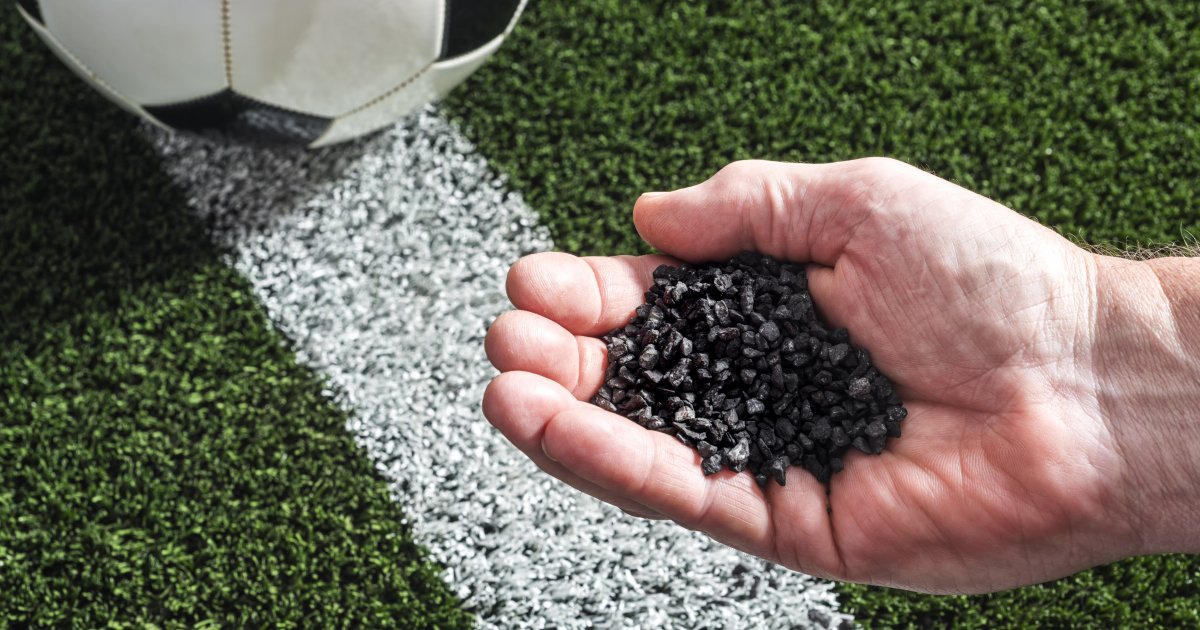Crumb Rubber Concerns
- In 2014, University of Washington soccer coach Amy Griffin became concerned after noting what seemed to her as an abnormally high number of young athletes developing cancer after playing on artificial turf.
- The Washington State Department of Health investigated Griffin's concerns and found that there was no evidence that playing on a crumb rubber field could be cancer-causing.
- More research is on the way, but there are some basic steps to follow to keep your family safe.
Artificial turf provides a consistent, weatherproof playing surface for soccer players, baseball players, and other athletes around the world. But is the material in this widely-used alternative to grass also posing a cancer risk to those who run, kick, slide and play on it?
Read MoreThe Washington State Department of Health investigated Griffin's concerns and issued a lengthy report that included, among other findings, that there was less cancer among the soccer players on Griffin's list than expected based on rates of cancer among Washington residents of the same ages in the general population. State officials further contended that there was no evidence that playing on a crumb rubber field could be cancer-causing.
In the years since the state's report, questions have persisted about the safety of crumb rubber turf, but no new research has emerged to dispute the initial findings. "There is no new evidence to suggest a greater risk of cancer associated with crumb rubber," says Laura Johnson, director of Washington State Department of Health's Office of Environmental Public Health Sciences. "We recommend that people who enjoy soccer and other games played on artificial turf continue to play."
Other researchers have also explored the issue of cancer risk associated with crumb rubber. A study published in 2014 in the journal Environmental Science and Technology found that the total risk of absorption through skin absorption, oral exposure or inhalation for athletes was insignificant and that the elevated health risk from inhalation was only likely to affect workers installing turf in small, poorly ventilated areas over a long period of time.

Pediatric and young adult oncologist Dr. Archie Bleyer, a clinical research professor at Oregon Health and Science University, published research in the journal Sports Medicine in 2017 that echoed Johnson's contention that young people should get out and play more. The turf, he said, is not a risk.
"We naturally have a need to find something to blame, but it's not the crumb rubber or anything else in synthetic turf that caused the cancers," he wrote. "On the contrary, physical activity should be encouraged and promoted by year-round, weather-resistant fields to help prevent cancer and other chronic diseases. Limiting field development could in the long run actually increase cancer incidence."
Dr. Bleyer explained that, unlike many cancers that tend to affect middle-aged and older adultsoften the results of long-term exposure to carcinogens such as tobacco, asbestos, ultraviolet rays from the sun and alcoholall but a few cancers in young people are a "mistake of nature" known scientifically as spontaneous mutation to malignancy.
Caution and Common Sense
Johnson, Dr. Bleyer, and other researchers acknowledge that the complex chemical makeup of crumb rubber includes potentially harmful substances. A 2019 study from Yale University, for example, found 96 chemicals in synthetic turf and rubber tire mulch used in toddler playgrounds. Of the 96 chemicals detected, a little less than half had never had toxicity assessments determining their health risks. Of the remaining chemicals, about 20 percent are "probably carcinogens," the Yale report stated.
In various corners of the world, just the suspicion of cancer risks associated with crumb rubber surfaces has prompted action. In 2016, dozens of sports clubs in the Netherlands stopped using artificial turf because of health concerns. In 2018, the town of Westport, Connecticut banned the use of crumb rubber turf at public recreational facilities. But evidence to support a ban or discontinued use of crumb rubber has yet to emerge.
More research is on the way, however. Johnson says public health officials around the country are awaiting a report from the Federal Research Action Plan (FRAP) on Recycled Tire Crumb Used on Playing Fields and Playgrounds, which should characterize the risk of human exposure to the turf materials. She said an initial FRAP on the subject suggests the chemicals in the rubber material available for exposure is relatively low. FRAP is a partnership among several federal agencies. Among them are the Centers for Disease Control and Prevention and the U.S. Environmental Protection Agency.
Parents and other members of the public should be aware, but not concerned, about chemicals in crumb rubber, Johnson says. "There are chemicals that cause cancer in crumb rubber, but research suggests exposures are very low and will not cause cancer in soccer players or other users," she adds.
How to Protect Your Family
Though there does not appear to be a significant health risk associated with crumb rubber turf, Johnson's office recommends the following precautions after playing on a synthetic turf or a playground with a recycled rubber ground cover. Tiny fragments of crumb rubber can sometimes cling to shoes or athletic wear.
- Wash your hands
- Take off shoes/cleats, playing clothes outside to prevent tracking crumb rubber into the house
- Shower after play and clean any cuts or scrapes
- Don't swallow any crumb rubber that accidentally gets into your mouth
Learn more about SurvivorNet's rigorous medical review process.


